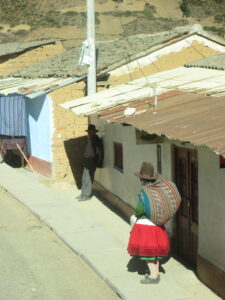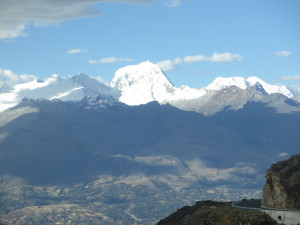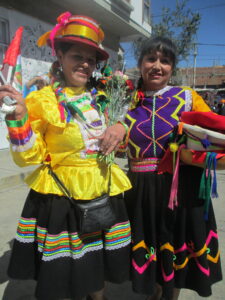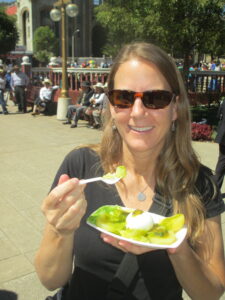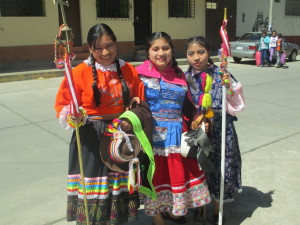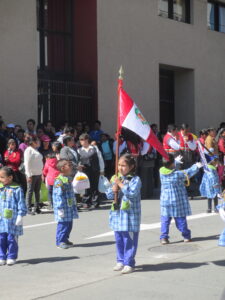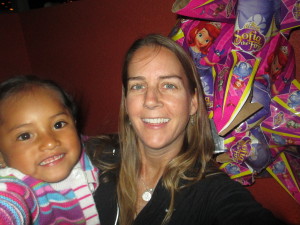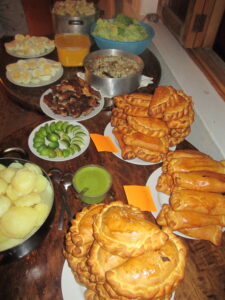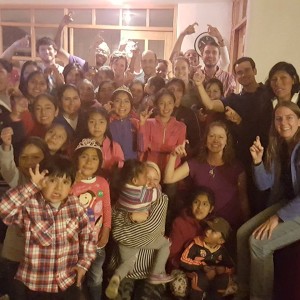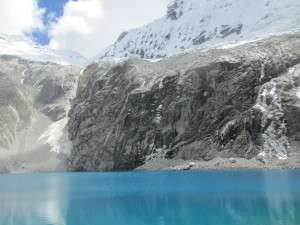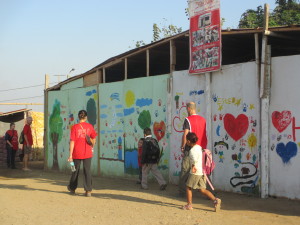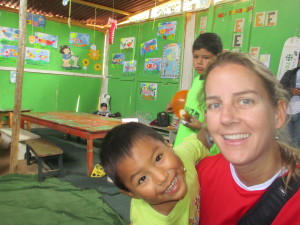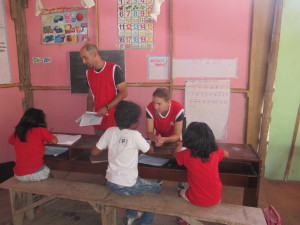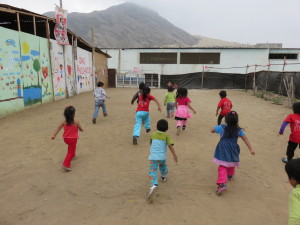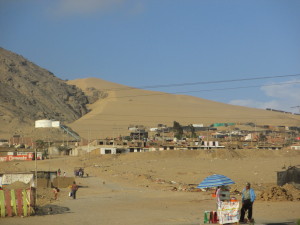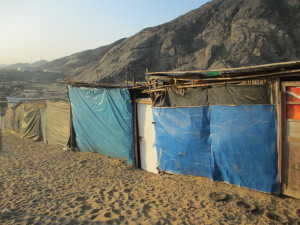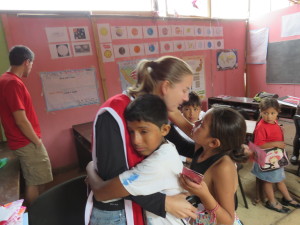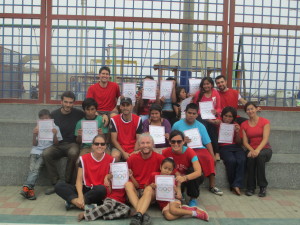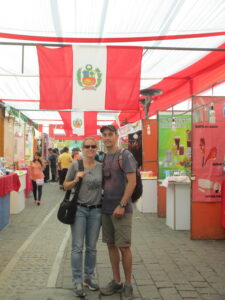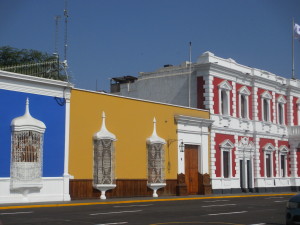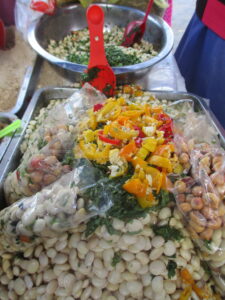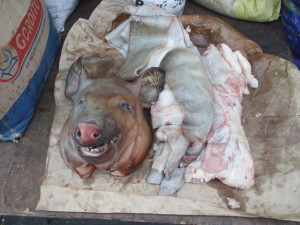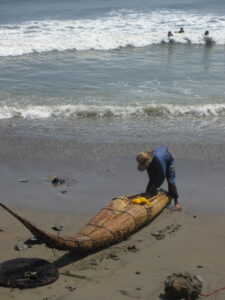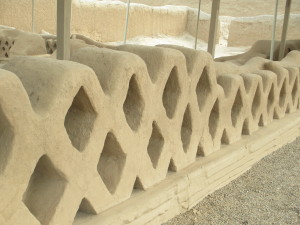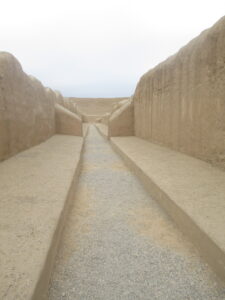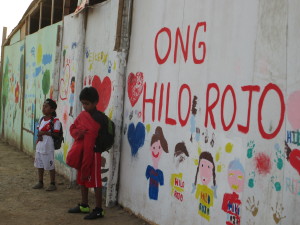With wonderful memories of our little friends at Hilo Rojo tucked into our hearts, we said adios to our volunteer pals and headed to the bus station. We climbed on board at 8:00 AM and spent nine hours in the front seats of the bus with fantastic views out our big windows. The transformation in the landscape was incredible! We drove away from the Pacific coast’s desert terrain and up into the huge Cordillera Blanca mountain range that towers above Huaraz, our destination for the next ten days.
I should also note that the bus ride wasn’t all sunshine and rainbows. While the views were spectacular, the actual driving part was treacherous. We wound our way up a narrow mountain road in the Andes for hours, and when we finally reached the pass at 13,000 feet we were feeling lightheaded and a little nauseous. The descent into Huraz was pretty miserable for both of us due to the endless S curves and hairpin turns. Harry is a really nervous passenger on mountain roads because he is convinced everyone drives too fast given the dangerous conditions and lack of visibility around each turn. We arrived at our hotel exhausted and a little green.
The Cordillera Mountains
The Cordillera mountain range, which is part of the Andes, is 124 miles long and contains 33 major peaks over 18,000 feet high. Mt. Huascaran, the highest mountain in Peru, sits at 22,204 feet. Much of the local water supply comes from snow melt off the range and residents in the valley depend on the water for farming. Various NGOs are engaging locals in conversations about the need to preserve and conserve the region’s water supply in the face of global warming.
Huaraz: The Switzerland of Peru
We instantly fell in love with Huaraz. While it’s not the most beautiful, historical or interesting city we’ve been to, it just felt good to be there. Kinda like Goldie Locks finding the perfect bed to sleep in: it wasn’t too big, like Lima and Arequipa, and it wasn’t too touristy, like Cusco. Nope, Huaraz was Just Right.
It was a totally fun coincidence that we were in Huaraz for the city’s 158th anniversary, which was four days before Peru’s Independence Day. Because of these holidays, there were five days of celebrations happening in and around the main square. There was a parade (because South Americans love their parades!), live music, endless fireworks, street performers and local food sold on every corner.
The specialty de jour was roasted pig. Several Indigenous women had full-size pigs balanced on top of their mobile food carts. They dug inside the carcass, elbow deep, to pull out the pork. Harry gleefully ate some topped with salsa and onions. I was happy to actually find some vegetarian street food that I could eat. Pictured below is my plate with potatoes, a hard-boiled egg and spicy salsa. Yum!
Birthday Party, Gringo Style
One of the things that made Huaraz so special was staying at Olaza’s Bed and Breakfast. Rosa and Ernestina are the sweetest sisters under 4′ 10″ you’ll ever meet. With matching long black braids and traditional dresses, they giggled while they worked and made sure everyone was happy from dusk to dawn.
Fifteen anthropology students from Eastern Carolina University were also staying at the B+B with us. They threw Ernestina’s 10-year-old daughter a birthday party like she’d never experienced before. The students bought groceries, a pinata and gifts for Stephanie. The sisters cooked all day, and we ate a delicious meal of potatoes, quinoa, empanadas, eggs, and hot salsa. We cheered on the kids as they broke open their first pinata, and we played loud music, encouraging everyone to dance and sing. It was a night none of us will soon forget.
Hiking in the Cordillera Range
One of the best things about Huaraz is its proximity to the mountains and numerous hiking trails. We definitely took advantage of being there and went on some amazing day hikes. I will share pictures of our hikes to Lago Wilcacocha, Lago 69 and Lago Churup in a separate post, but here’s a peek at Lago 69:
Evil Peruvian Gut Monsters: Take II
You might recall that five weeks ago, Harry and I both got really, really sick in Arequipa. After four days, we recovered and never looked back. But then, when I was least expecting it, the gut monsters attacked me again. I was soooo disappointed. Assuming I’d be better again in a few days like last time, I didn’t stress it too much. Although I will admit, it was a total bummer to be sick in Huaraz with all those fantastic mountain peaks and hiking trails looking down at me. So, did I get better in four days? Was I feeling healthy enough to take the bus eight hours back to Lima? [Cue in suspenseful music] You’ll have to wait for my next post to hear all about it…

